Let’s talk about fiber, here’s the first surprising fact: It’s a carbohydrate. But not just any carbohydrate. Because it’s indigestible, fiber doesn’t affect your body the way other carbs do.
Here’s the second surprising fact: There are two major types of fiber. Soluble fiber dissolves readily in water and turns into a gel upon digestion. It takes a long time to digest and slows the release of other nutrients into the blood.
It’s counterpart, insoluble fiber, doesn’t dissolve in water. It enhances your body’s ability to bulk up stool and keeps food moving through your digestive system.
Fullness
Fiber’s effect on satiety is usually attributed to two main factors: adding bulk to the diet and slowing down digestion. When you eat high-fiber foods, this increased bulk takes up more space in your stomach. This is directly related to fullness because your stomach is a “volume counter” rather than a “calorie counter.” The more space you take up with food or fluids, the fuller you feel.
It’s no wonder you can plow through a whole box of cereal but struggle to finish a second serving of broccoli. The high-fiber nature of the broccoli takes up more space in your stomach, which sends signals to your brain to put down the fork.
Additionally, foods high in soluble fiber slow digestion and absorption by creating a gel once ingested. A slower rate of digestion helps to keep you fuller between meals and allows satiety signals to be sent to your brain, which work to stop you from eating as much.
Insulin Control
Regardless of your goals, enhanced insulin sensitivity is invaluable. The ability to efficiently clear glucose from the blood and to effectively distribute it bodes well for body composition, regardless of your physique goal.
Beneficial Bacteria
The beneficial bacteria in your gut feed on fiber. Increasing the amount of good gut bacteria has been shown to enhance immune function and reduce inflammation.
A stronger immune system helps you get to the gym, rather than being stuck on the couch, sick, wrapped up in a blanket. You can’t make progress if you’re unable to get to the gym!
Reducing inflammation may reduce your risk of several metabolic abnormalities such as high blood pressure, insulin resistance, and high blood lipids.
Regulation
A diet plentiful in insoluble fiber is effective at increasing fecal bulk and promoting a regularly scheduled trip to the bathroom. There’s even some new research demonstrating that people who eat a diet higher in fiber may expend more calories through their poop than those consuming a low-fiber diet. The results may be miniscule, and more research is needed at this point, but, hey, it’s another incentive to stay regular.
How Much Fiber Should I Consume?
The recommended intake for women is a minimum of 25 grams per day, whereas for men it is a minimum of 38 grams per day. More is not necessarily better. Excessive amounts of fiber can lead to GI distress, impaired nutrient absorption, and unintended weight loss. If you’re continuously full, it’s hard to eat enough!
How To Increase Daily Fiber Intake
If you’re not eating enough fiber at the moment, have no fear, as there are many delicious high-fiber foods to choose from. Start with one meal, and swap in a high-fiber source—say, brown rice for white rice. Then, start increasing your vegetable intake, one meal at a time, until you’re at 4-5 servings per day. Slow and steady is the key; otherwise, you may suffer cramps, excessive bloating, and gas.
Excellent Sources Of Fiber
- Soluble Fiber: Oats, nuts, seeds, beans, legumes, and some fruits and vegetables
- Insoluble Fiber: Whole-grains such as wheat and popcorn, fruits and vegetables (with peels)
When you increase your fiber intake, you should increase your fluid intake, too. Without adequate fluids, fiber can actually increase constipation and impede digestion.
What About Added Fiber?
Many processed foods now contain added fiber, also known as functional fiber. Dietary fiber comes from plants, but functional fiber, such as polydextrose and inulin, is isolated from natural sources and then added to foods such as cereals and bars. There is limited long-term research on the effects of functional fiber, but current literature suggests that the benefits may mirror those of dietary fiber.
Choosing fruits and vegetables will provide you with fiber and other vital nutrients that cereal bars and processed foods do not.
There are no known negative side effects to date, but the idea of adding fiber to processed foods allows many nutrient-poor foods to be deemed “healthy.” Choosing fruits and vegetables over cereal bars and processed foods will be better for your nutrition plan as a whole.
Reference: BodyBuilding.com

